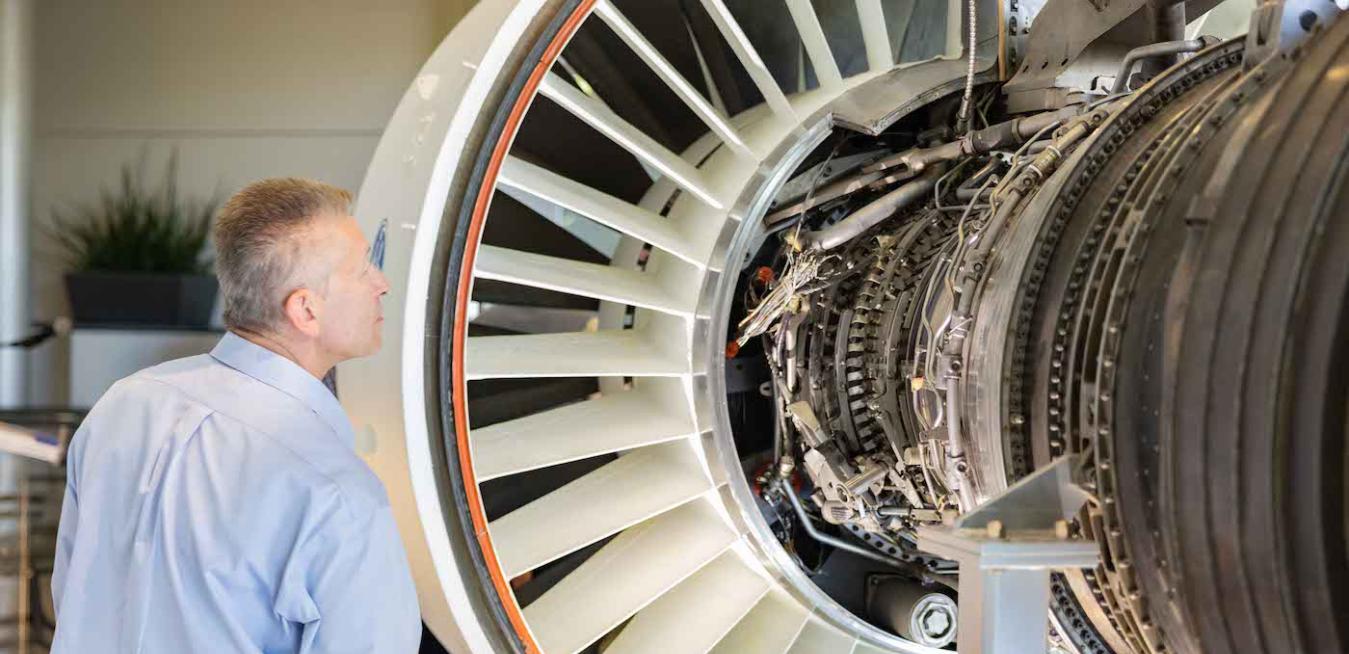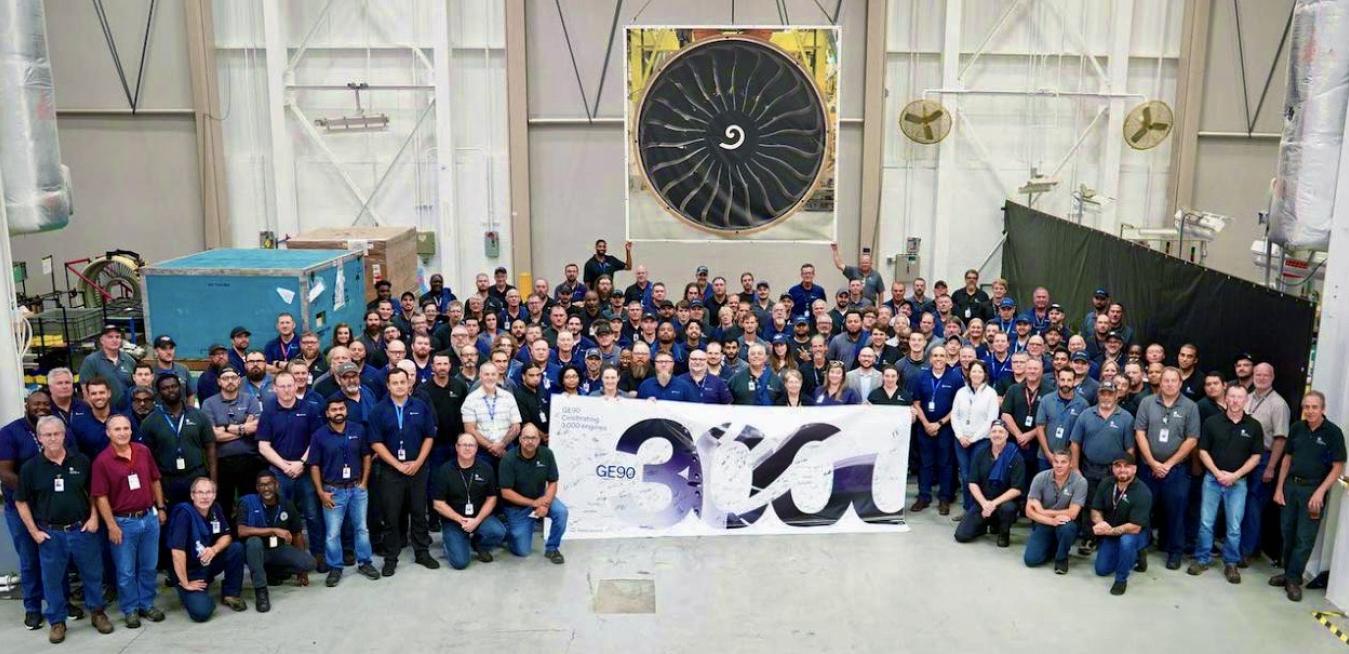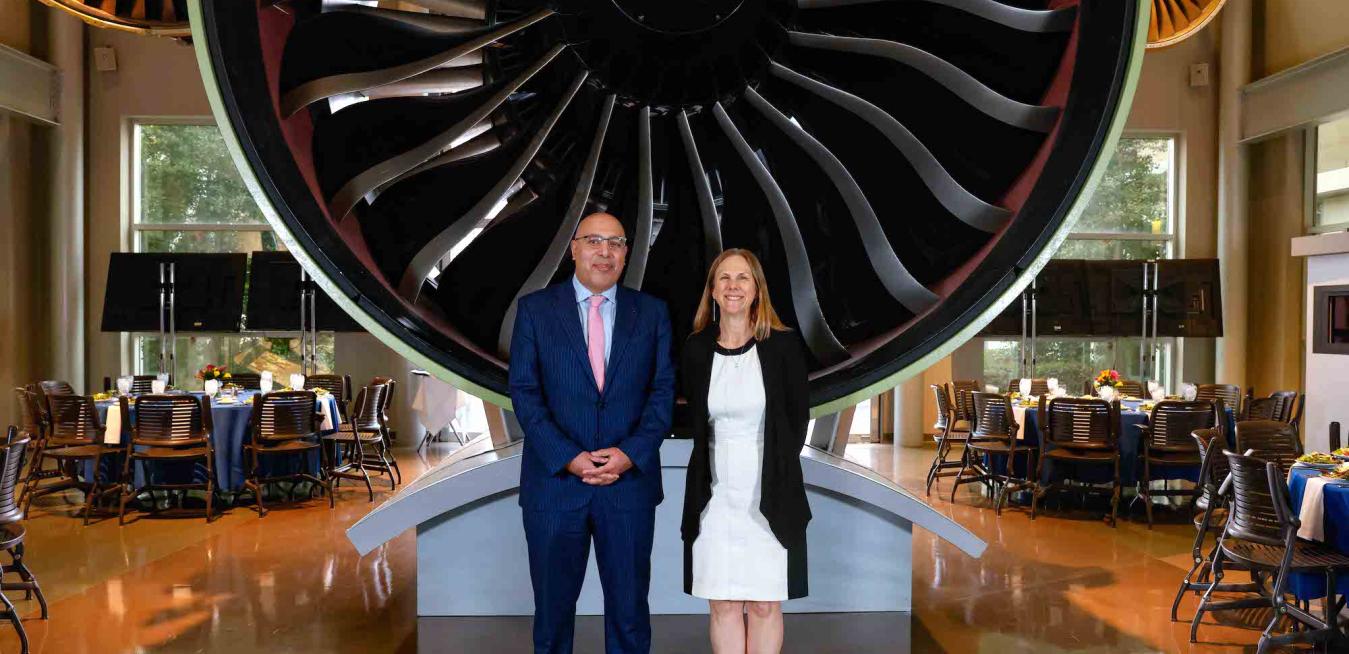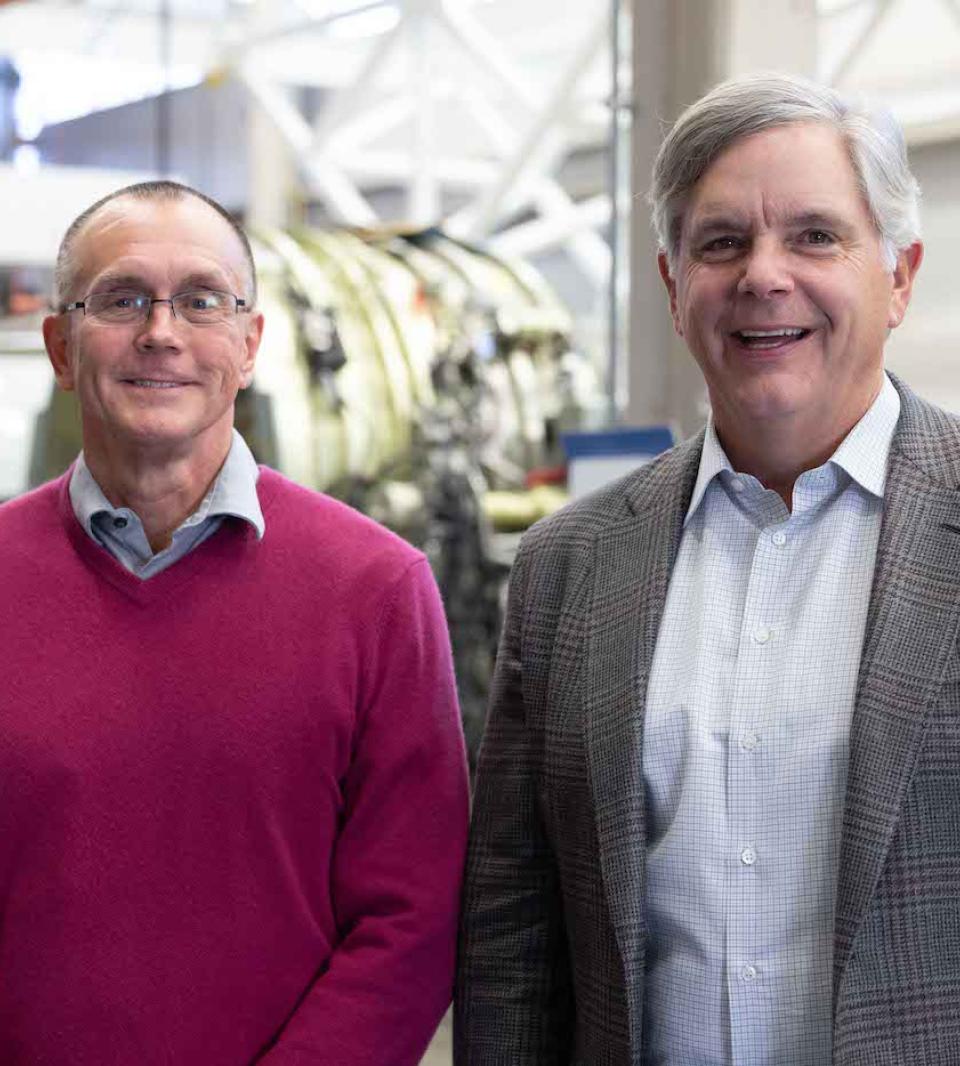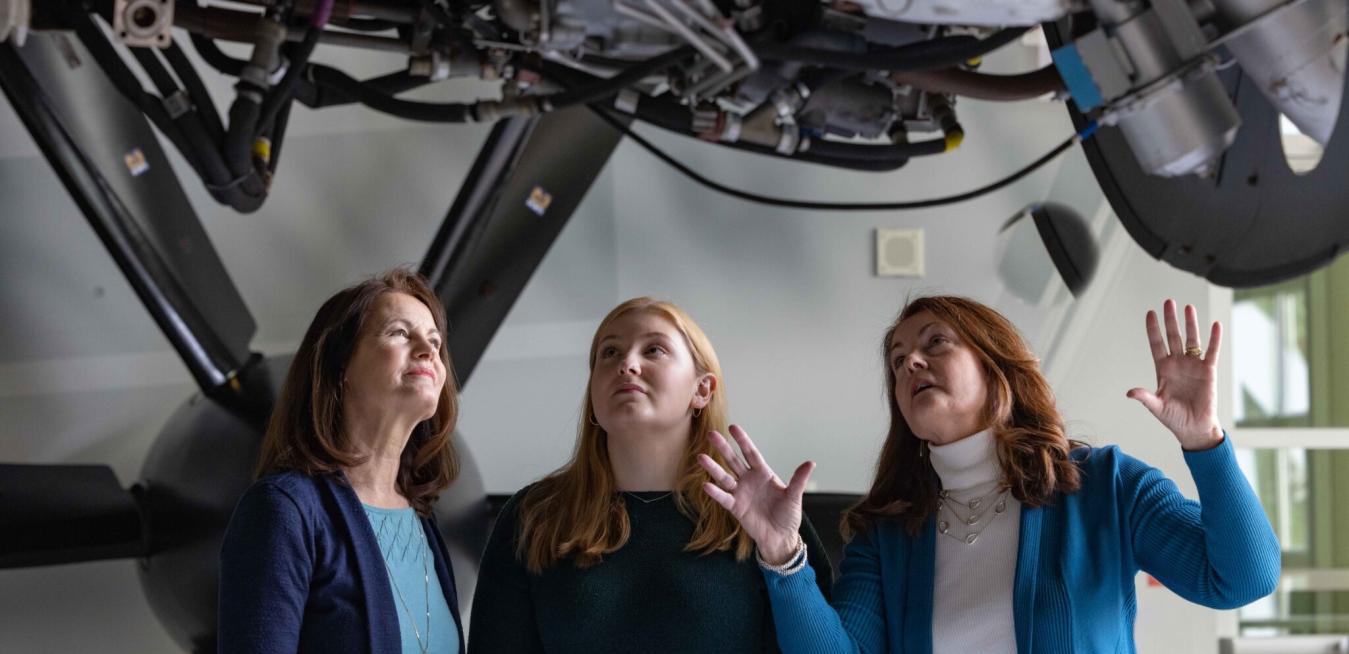- GE Aerospace Research’s Robotics Team Demonstrates “Sensiworm” for future On-Wing jet engine inspection and repair
- Untethered soft robotics, electronic skin-innervated platform resembles an inchworm that moves easily through the crevasses and curves of jet engine parts to detect part defects or corrosion, and can even measure the thickness of thermal barrier coatings
- Sensiworm robots could greatly expand the eyes, ears, and inspection capabilities of human service operators and enable more on-wing inspections with less maintenance burden
Ohio doesn’t get many sandstorms. But an hour east of Cincinnati, on an otherwise sunny day, a dust devil is brewing. Atop a towering scaffold, a row of hoses pumps out dense clouds of powder and grit. They are instantly sucked, like a horizontal tornado, into the spinning fan blades of a jet engine a few feet away.
The LEAP engine, the high-bypass turbofan produced by CFM International, the 50-50 joint company between GE Aerospace and Safran Aircraft Engines, has built a reputation as a leader in efficiency and asset utilization. In airline service, it is demonstrating better durability in neutral environments than the previous-generation CFM56 product line at the same point in that engine’s life.
Moving deep inside the bowels of a jet engine — negotiating baroque curves and tricky surfaces — GE Aerospace Research’s new Sensiworm looks less like a complex triumph of engineering than something eerily close to a living organism. This is not a coincidence.
The dawn of the jet age gave birth to the concept of the global village. Once jet engines made the jump from military fighters to civilian planes in the 1950s, commercial passenger service could carry people farther and faster than ever before. Fares dropped, ticket sales quadrupled, and by 1972 almost half of all Americans had traveled by air.
In the annals of engine production, the GE90 holds a special attraction for both the aviation world and the people at GE Aerospace who’ve worked on the engine program. Among commercial engines, the number of firsts it’s chalked up over the years is hard to beat: First to enter service with carbon-fiber composite fan blades. First certified at over 100,000 pounds of thrust. First engine certified for ETOPS (Extended-range Twin-engine Operational Performance Standards). First certified with an additive part. First program to employ analytics-based maintenance.
As a 10-year-old, Pam Boehm sometimes sat in on her older sister’s engineering classes at the University of Notre Dame. Not the usual activity for a kid, but the experience introduced her to a discipline that would shape her life. “It’s not that I really had any idea what was happening in the classes, but the math was always exciting,” she says. After her father died unexpectedly, her grandfather stepped in as another big influence. Much of the rest of her childhood was spent following her “Mr.
Inside a vast, 69,000-square-foot engine shop situated on the southern edge of the Cincinnati-Northern Kentucky International Airport (CVG), a small group of GE Aerospace mechanics and college co-op students huddle around a GEnx engine. An engineer is demonstrating how to use a prototype ultrasonic wrench. As the mechanics crane their necks to observe, the engineer deploys the vibrating wrench to loosen a specific type of bolt that can cause damage to a part in the engine’s combustion case if not handled properly.
Shortly after he joined GE Aerospace in 1984 as a materials engineer in Evendale, Ohio, Glenn Culbertson received some blunt advice from a senior colleague. “A lot of people will tell you that they’re your customer: your boss, your boss’s boss, the CEO,” the co-worker told him. “They’re all wrong. The customer is the engine. If you do right by the engine, you’ll do right by everybody else.”
For almost 40 years, identical twins Laura Schreibeis and Lisa Kitko have called GE Aerospace their career home. When they were growing up, people often got the two confused. And when they arrived within a few years of each other at GE Aerospace, the same was true at work.








